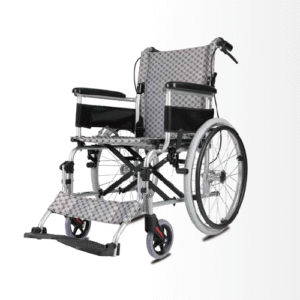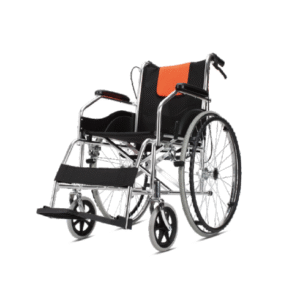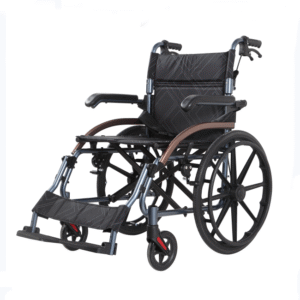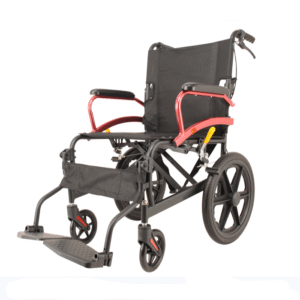Portable Small Wheelchair: 5 Key Questions Answered—From Size Dimensions to Narrow Spaces & Easy Mobility
For users navigating tight living spaces, crowded public areas, or small homes, a portable small wheelchair is a game-changer. But “small” can mean different things to different people—from compact folding sizes to narrow frames. If you’re wondering whether a tiny wheelchair will fit your needs (and your hallway), we’ve got you covered. Here are the 5 most critical questions answered to help you find the perfect fit.
1. What Are the Typical Size Dimensions of a Portable Small Wheelchair?
“Small” is defined by both unfolded and folded measurements, ensuring it works in daily life and storage:
- Unfolded Width: The narrowest models range from 20–24 inches (vs. 26–30 inches for standard wheelchairs). This is key for squeezing through doorways (most interior doors are 24–30 inches wide) or tight hallways.
- Seat Size: Seats are usually 16–18 inches wide (standard is 18–20 inches), ideal for users with slimmer builds. For reference: a 16-inch seat fits most adults under 5’8” comfortably.
- Folded Dimensions: When folded, the best models shrink to 28x18x12 inches or smaller—small enough to tuck under a bed, slide into a closet, or fit in the trunk of a compact car (e.g., a Honda Civic or Toyota Corolla).
2. Can It Navigate Narrow Spaces Like Home Hallways or Elevators?
Yes—if you choose the right model. The key is prioritizing maneuverability:
- Turning Radius: Look for a turning radius of 30 inches or less. This lets the wheelchair pivot in tight spots, like between kitchen counters or around bedroom furniture.
- Wheel Size: Smaller rear wheels (8–12 inches) improve agility in narrow spaces, while larger front casters (5–6 inches) prevent getting stuck on thresholds or rugs.
- Real-World Test: Measure your tightest space (e.g., a hallway between walls) and compare it to the wheelchair’s unfolded width. Leave 2–3 inches of clearance to avoid scraping walls.
3. Is a Small Wheelchair Sturdy Enough for Daily Use?
Don’t let size fool you—modern small wheelchairs are built to last, even with daily use:
- Frame Material: Aircraft-grade aluminum is standard. It’s lightweight but strong enough to handle 250–300 lbs (check the weight capacity—never exceed it).
- Reinforced Joints: Look for steel brackets at the seat frame and wheel axles. These prevent wobbling, even after months of folding/unfolding.
- Terrain Adaptability: While not designed for rough ground, quality models handle smooth indoor surfaces (tile, hardwood) and gentle outdoor paths (sidewalks, mall floors) with ease.
4. How Portable Is It, Really? Can One Person Lift It?
Portability goes beyond size—it’s about weight and ease of handling:
- Weight Range: Most small portable wheelchairs weigh 20–30 lbs. Models under 25 lbs are ideal for solo users or caregivers with limited strength, as they can be lifted into cars or storage without strain.
- Folding Mechanism: Opt for “one-touch” folding. The best designs collapse in 10 seconds or less, with no heavy lifting required. Some even come with a carry handle for easy transport.
- Travel-Friendly: Folded sizes under 30x20x10 inches fit in overhead luggage bins (for trains or planes) and small storage closets—perfect for apartment dwellers.
5. Does “Small” Mean Sacrificing Comfort?
Not necessarily—comfort depends on smart design, not size:
- Seat Comfort: Look for padded seats (1–2 inches thick) with breathable fabric to prevent sweating during long sits. Some models offer adjustable seat depth (16–18 inches) to fit different leg lengths.
- Armrests & Footrests: Removable armrests make transfers easier (e.g., from wheelchair to couch), while swing-away footrests accommodate users with shorter legs or mobility aids like braces.
- Back Support: A contoured backrest (16–18 inches tall) supports posture without adding bulk. Avoid overly flat backrests—they cause slouching over time.
Final Thoughts
A portable small wheelchair solves the “big wheelchair in a small space” dilemma—if you prioritize the right specs. By focusing on dimensions, maneuverability, sturdiness, portability, and comfort, you’ll find a model that fits your home, your life, and your need for independence.
Thank you for reading this, dear, if you have any suggestions about our website or want to know about wheelchair, please contact us. We will respond quickly.



